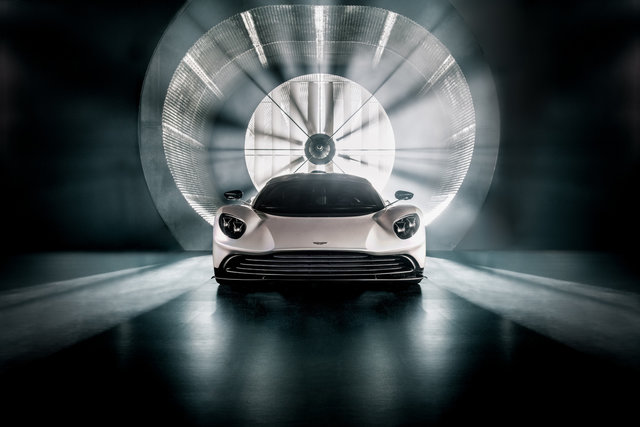Owning an Aston Martin means more than acquiring a luxury vehicle—it means creating a personal design statement that reflects your individual taste...


Aston Martin is significantly accelerating the development of its Valhalla supercar, leveraging the technological prowess and methodologies of Formula 1. Slated for production in 2024, and limited to 999 units, the Valhalla benefits from the expertise of Aston Martin Performance Technologies (AMPT), the consulting arm that also aids the automaker's Formula 1 team.
Uniting Road and Track Engineering
Aston Martin Global Chief Brand and Commercial Officer, Marco Mattiacci, highlighted the crossover of engineering capabilities between the road car division and AMPT. Claudio Santoni, the Engineering Director of AMPT, further emphasized that such integration allows seamless adoption of advanced Formula 1 methods into the Valhalla's road car development. Specifically, the collaboration concentrates on three core domains: dynamics, aerodynamics, and materials.
Driving Dynamics Evolved Through Simulation
The Valhalla aims to redefine the driving experience by focusing on intricate vehicle dynamics. It leverages Formula 1 simulation tools for about 90% of its dynamic characteristic development, with final tests being conducted in real-world scenarios. Inputs from Formula 1 drivers like Lance Stroll and Fernando Alonso are vital in pushing the vehicle's performance envelope. Additionally, the ergonomics of Valhalla’s cockpit are optimized through learnings from Formula 1, making sure that the driver enjoys unparalleled control.
Cutting-Edge Aerodynamics
The aerodynamics of the Valhalla benefit directly from the technology used in Formula 1. While not constrained by Formula 1 regulations, Valhalla uses fully active aerodynamic systems that can generate over 600kg of downforce at 240 km/h. These systems are adapted to ensure optimal grip, balance, and consistency under varying conditions. Computational Fluid Dynamics and wind tunnel testing, common in the Formula 1 arena, have been used to refine Valhalla's aerodynamics meticulously.
Materials and Structure
The Valhalla will primarily feature a carbon fibre monocoque, a material well understood by AMPT and its Formula 1 team. This high-tech carbon structure is engineered to provide optimal stiffness and weight balance, utilizing a blend of Resin-Transfer-Moulding and Formula 1 autoclave technology. This not only ensures the vehicle's dynamic capabilities but also its safety standards.
Powertrain: A Step Toward Electrification
Under the hood, Valhalla is equipped with a twin-turbo flat-plane V8 engine, which is Aston Martin's most advanced V8 to date. Coupled with three e-motors, the hybrid powertrain generates an astonishing 1,012 PS. The vehicle features four-wheel drive and uses torque vectoring, a technology that controls the torque applied to each of the front wheels for improved cornering performance.
According to Aston Martin Product Development Director Carlo Della Casa, the objective for Valhalla is to set a new benchmark in the supercar category. The first running prototype is expected to be on the roads later this year, aligning with the automaker's plans to start production in 2024.
Owning an Aston Martin means more than acquiring a luxury vehicle—it means creating a personal design statement that reflects your individual taste...
Aston Martin has just unveiled the DB12 S, and it's already making waves in the luxury performance world. If you've been following the British...
Few engines in automotive history carry the prestige and presence of a naturally aspirated V12. Fewer still wear the winged badge of Aston Martin....